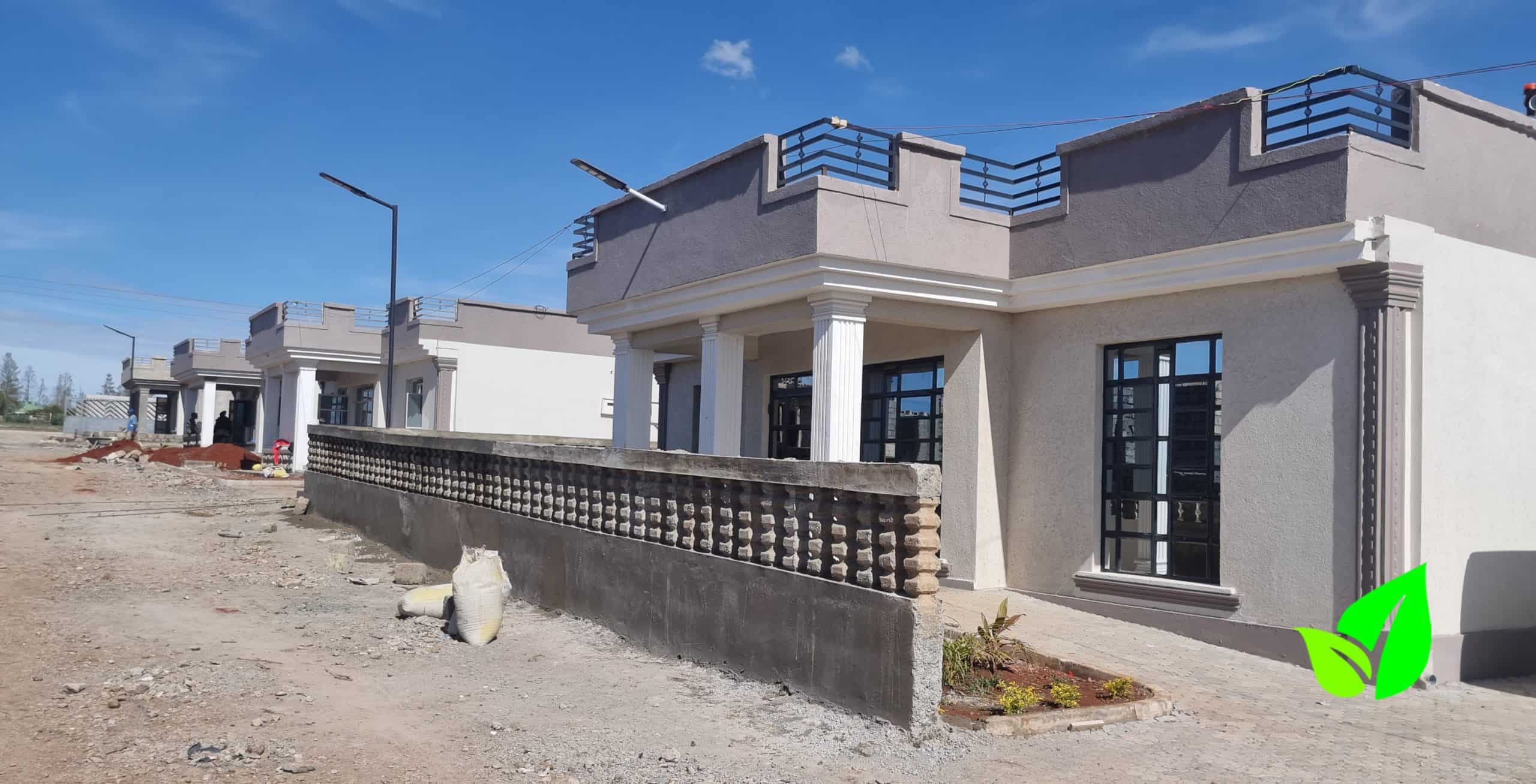The construction sector in Kenya recorded a 3% growth in 2023, slightly lower than the 4.1% growth observed in 2022. During this period, the State Department for Housing and Urban Development significantly increased its output, completing 3,357 housing units—nearly double the previous year’s number.
In recent years, modern homes with flat roofs have gained popularity, replacing traditional pitched roofs with iron sheets or tiles. However, homeowners with flat roofs face specific challenges. In an interview with Trendynews.co.ke, Adrian Gachewa, an architect from the University of Nairobi, highlighted poor drainage as one of the major issues affecting these types of homes.
According to the 2024 Economic Survey by the Kenya National Bureau of Statistics (KNBS), while the construction sector continues to grow, the rise of flat-roofed homes introduces new design and maintenance complexities for homeowners.

How many housing units were built in 2023?
During the period under review, the value of building plans approved by the Nairobi city count increased from KSh 162.5 billion in 2022 to KSh 220.0 billion in 2023.
“The number of dwelling units completed by the State Department for Housing and Urban Development almost doubled to 3,357 housing units in 2023.
Employment level in construction in the public sector rose by 2.1% from 9,500 in 2022 to 9,700 persons in 2023 while employment level in construction in the private sector rose by 1.8% to 226,300 in 2023,” the report stated.
Why flat roofs are gaining traction
Kenya’s home style is evolving. In recent years, elegant houses with flat roofs have replaced traditional homes with pitch and iron sheets or tile roofs in new construction. The rooftop terrace has become very popular, with flat-roofed houses once reserved for coastal locations rapidly gaining momentum.
Real estate developers attribute this to reduced land sizes, the high cost of timber, and the perception that pitch houses are old-fashioned.
Challenges Facing Homeowners with Flat Roofs
Homeowners with flat roofs encounter several design-related challenges, as highlighted by Adrian Gachewa, a graduate architect from the University of Nairobi, during an interview with Trendynews.co.ke. These challenges include:
1. Structural Load Considerations
Flat roofs demand stronger structural support compared to pitched roofs. Gachewa emphasized that additional reinforcement is essential, particularly in Kenya’s diverse terrain and climatic conditions. This ensures the roof can withstand external pressures and maintain its integrity over time.
2. Space Utilization Complexity
Flat roofs often face issues such as inadequate waterproofing, poor structural integrity, and complications with load distribution when used for additional purposes. These factors increase the risk of leaks or collapses if not adequately addressed. Solutions include:
- Conducting a comprehensive structural analysis during the design phase.
- Applying multiple waterproofing layers to enhance durability.
- Designing with slight gradients to promote water runoff.
- Consulting local structural engineers to tailor designs to regional conditions.
3. Material Degradation
Flat roofs are more susceptible to water accumulation than pitched roofs, making them prone to leaks and structural damage. According to Gachewa, prolonged sun exposure and fluctuating temperatures accelerate material degradation, especially at seams. Regular inspections and maintenance are essential to mitigate these effects.
Drainage System Mitigations
- Implementing a minimal slope design with at least 20mm/m.
- Adding multiple drainage points to disperse water effectively.
- Installing internal drainage systems with several outlets for optimal performance.
4. Energy Efficiency Challenges
Flat roofs absorb more heat in Kenya’s tropical climate, leading to higher indoor temperatures and increased energy costs for cooling.
Recommendations for Homeowners
Gachewa advises aspiring homeowners to:
- Seek advice from local architects with expertise in regional building practices.
- Integrate traditional building techniques with modern technologies to suit local microclimates.
- Prioritize sustainable, locally sourced materials to minimize costs and environmental impact.
By addressing these challenges proactively, homeowners can ensure their flat roofs are durable, functional, and well-suited to Kenya’s unique conditions.
“Architects must carefully calculate weight-bearing capacities, especially in regions with potentially heavy rainfall. Use of high-quality, UV-resistant waterproofing membranes. Consider local rainfall patterns in Kenya (heavy rainy seasons),” he advised aspiring homeowners.
Which one do you fancy?
Flat roof Pitched roof pic.twitter.com/8gYOix9Xre
— House Designs Kenya (@HouseDesignsKe) April 25, 2023
Space Utilization Challenges
The architect identified several issues with flat roofs, including inadequate waterproofing, poor structural integrity, and complications with load distribution when the roof is used to support additional weight. These issues necessitate careful engineering to prevent leaks or structural failures. Proposed solutions include:
- Comprehensive Structural Analysis: Conduct detailed assessments during the design phase.
- Enhanced Waterproofing: Apply multiple waterproofing layers to ensure durability.
- Gradient Design: Incorporate slight gradients to facilitate water runoff.
- Local Expertise: Consult structural engineers familiar with regional building conditions.
Material Degradation
Flat roofs are more prone to water accumulation compared to pitched roofs, increasing the risk of leaks and structural damage. Architect Gachewa highlighted their susceptibility to material degradation caused by:
- Continuous Sun Exposure: Accelerates wear and tear.
- Temperature Fluctuations: Weakens materials over time, making seam vulnerabilities more pronounced.
Frequent inspections and maintenance are critical to addressing these vulnerabilities.
Drainage System Solutions:
- Minimal Slope Design: A recommended slope of at least 20mm/m for effective water drainage.
- Multiple Drainage Points: Prevent water concentration by incorporating several outlets.
- Internal Drainage Systems: Include multiple outlets to enhance efficiency and reduce water accumulation.
Energy Efficiency Implications
Flat roofs tend to absorb more heat, especially in Kenya’s tropical climate. This can increase indoor temperatures and energy costs for cooling.
Recommendations for Aspiring Homeowners
Architect Gachewa advises Kenyans considering flat roofs to seek guidance from local architects familiar with regional conditions. He recommends:
- Blending Tradition and Technology: Combine traditional construction techniques with modern innovations to adapt to local microclimates.
- Sustainable Material Choices: Use locally sourced, eco-friendly materials to reduce costs and environmental impact.
By incorporating these considerations, homeowners can ensure functional, durable, and climate-responsive flat roof designs.